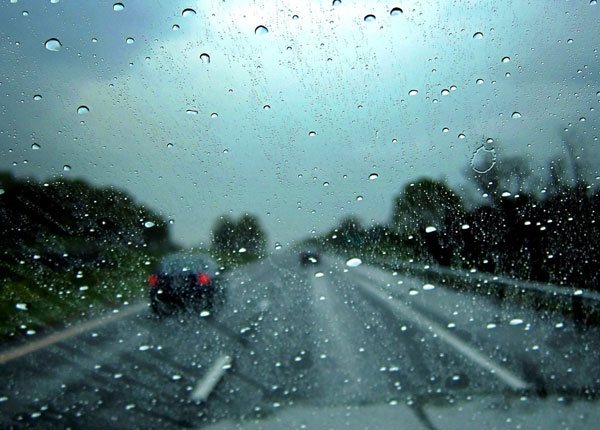
Driving Through Fog & Smoke: Safety Rules for Limited and Zero Visibility
Updated Nov. 16, 2020Of all the adverse weather conditions you may have to deal with while driving, fog is the most dangerous. You cannot see obstacles, people and other vehicles, nor can the drivers of other vehicles see you. The best way to stay safe during foggy weather is not to drive in it at all, if possible. Do not start a journey if the fog is so thick that the way ahead is completely obscured a few feet in front of your vehicle.
If you must drive in foggy conditions, follow these safety tips:
- 1

Turn on your headlights to increase visibility.
Use low-beam lights, as high-beams will reflect off the moisture in the air and cause glare. - 2

Activate fog lights, if it is legal to do so and your car is equipped with them.
Use fog lights in addition to your ordinary headlights, not on their own. - 3

Activate your windscreen wipers.
Poor visibility when driving through fog is often caused by moisture build-up on the windscreen rather than by the fog itself. - 4

Do not drive with parking lights or hazard lights on.
This could confuse other road users and result in a collision. - 5

Reduce your speed.
Drive slowly in fog
Slowing down is the easiest and most effective way to protect yourself when driving in foggy conditions. Keep an eye on your speedometer as having an unclear view of your surroundings can make it difficult to gauge how fast you are traveling.
You must drive even more slowly when you see headlights or red taillights. Fog can make other vehicles seem further away than they truly are. Increase your following distance and make sure you can stop in the space you see in front of your vehicle. Be aware of slow-moving vehicles ahead of you and check the rearview mirror frequently for vehicles approaching from behind.
Fog lights
Fog lights can be an enormous help in extremely foggy conditions. They are specifically designed to maximize your view of the road ahead and to make your vehicle more visible to other drivers, thus reducing the danger of driving in fog. However, fog lights are not legal in all states. Where they are permitted, they must generally be made and fitted to very specific safety guidelines outlined in the driver’s manual. Check your handbook for the rules concerning fog lights in your state.
Merging and passing
Crossing, merging with, or passing another lane of traffic is a very bad idea in foggy conditions. Poor visibility will dramatically increase your chances of misjudging another vehicle’s speed or distance and causing a collision. Only merge or pass when driving in fog, if it is 100 percent necessary. Fog can make the surface of the road slippery; always apply the brakes gently and smoothly to avoid skidding.
Be aware of patchy fog
You must still slow down when patchy fog allows you normal visibility some of the time. Use your headlights just as you would in heavier or more consistent fog. Remain alert and do not let your guard down in patchy fog, as you could drive into a heavier bank of fog where visibility is poor at any moment. Try not to panic if you find yourself suddenly unable to see ahead, behind or to the sides of your vehicle. Instead, follow the tips outlined at the start of this module.
Limited or zero visibility
When fog becomes so thick that you can barely see, pull off the road as soon as it is safe to do so. Be patient and do not continue your journey until the fog has subsided enough for you to see clearly. Always turn off your headlights and switch on your hazard lights when stationary on the side of the road. That way, other road users will be able to see you, but they will know you are not moving.
Stopping or stalling in the fog
Stopping your vehicle on the roadway in fog is incredibly dangerous. Other drivers may not be able to see you and if they can, they will expect you to be moving. If you must stop your vehicle, move it off the roadway as quickly as possible. Leaving your vehicle unattended in the roadway will place other drivers in danger. If your vehicle stalls and you are unable to move it, make sure you:
- Turn on your hazard lights or place flares around the vehicle to warn other drivers.
- Move away from the vehicle to a safe place at the side of the road.
Driving through smoke
Driving through smoke presents similar challenges to driving through fog, with the added threat that smoke can cause asphyxiation and a fire may be nearby. Avoid driving near fires or through smoke whenever possible. If driving through smoke is unavoidable, reduce your speed and switch on your low-beam headlights. Like fog, smoke can reflect high-beam headlights and cause glare.
Always steer, accelerate and brake gently when driving through smoke. Visibility will be poor and very dense smoke can cause damage and limit your control of the vehicle. Be aware that you may encounter stopped vehicles on the highway.




